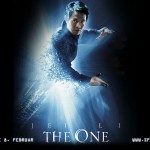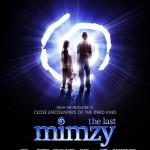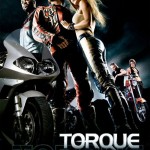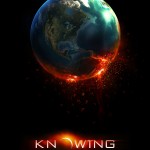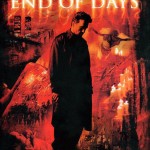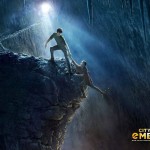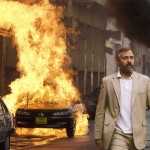Knowing: Interview with VFX Supervisor, Eric Durst
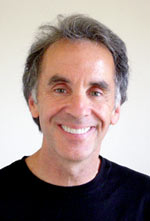 A graduate from Cal Arts in Animation, Eric Durst started his journey 30 years ago to make groundbreaking imagery. Beginning as a director with his own personal projects, he came to LA to work on Tron. This led him to direct some of the most inventive “combo” commercials during this period, integrating live action performances with visual effects. His venture into motion picture visual effects began with a dozen movies like the Batman sequels and Spider-Man 2, and most recently, The Last Mimsy and City of Ember.
A graduate from Cal Arts in Animation, Eric Durst started his journey 30 years ago to make groundbreaking imagery. Beginning as a director with his own personal projects, he came to LA to work on Tron. This led him to direct some of the most inventive “combo” commercials during this period, integrating live action performances with visual effects. His venture into motion picture visual effects began with a dozen movies like the Batman sequels and Spider-Man 2, and most recently, The Last Mimsy and City of Ember.
We had a conversation with him about his latest work, Knowing, which was released March 20th 2009. Since Eric worked on the major “spoiler” part of the finale, we were limited as to what we could reveal.
You share screen credit on Knowing with Andrew Jackson. How was the work divided and did you get to supervise on set?
I came to the project late in the schedule, so my involvement was only in the post production process. Andrew was working on the Subway and Plane sequences, along with many other shots. I was involved mainly in the last final sequences of the film, most notably when the wave of fire engulfs the East Coast and other scenes which comprise the climax of the film.
Describe your most difficult shots.
Each sequence posed its own challenges. The fire sweeping through Manhattan that BUF created was especially complex, due to the extreme detail required to retain the city’s vast scale. Using a wide helicopter plate of the island, a wave of fire emerges from the distance and blasts through lower Manhattan, taking out all the skyscrapers. The buildings seen in the plate had to be modeled in 3D to match the photography. The fire was created using fluid simulations, along with some additional shaders developed by BUF for explosions and smoke. The buildings were rigged to collapse, along with additional animation to complete the destruction of the city.
The look of the smoke and fire was initially set up by a shot that starts the sequence, one produced by Animal Logic. BUF has their own proprietary simulation software, so they used the Animal Logic shot as a visual target and built on that. One major difference between the shots was in the area shown, with the initial Animal Logic shot showing a two block view and the Buf shot displaying a 5 mile radius. To keep the audience orientated, the look of the fire had to be visually consistent at these two scales. If you just took the tighter fire and scaled it back to equal the wider area, all detail was lost and so was your visual compass. Visual cheats were required, so the fire’s detail and the overall feeling between the two scales was maintained throughout the entire sequence, regardless of how much area you saw in each particular shot.
One aspect that you can really sense visually, is when the fire wraps around the buildings and through the streets. In early tests, when this high degree of detail was missing, the fire looked too much like an overlay. Adding this articulation, even when the fire is in the extreme distance, added the degree of realism required to pull off this iconic shot, creating an image that is very memorable.
Alex Proyas directed the FX intensive I Robot. Did he have an understanding of the FX process?
Yes, Alex is very familiar with the VFX process and has a keen eye and understanding of the levels of detail required to make imagery that is convincing. In several shots in the end sequence of “Knowing”, many lessons that were learned during the “I Robot” experience were accessed.
The wonderful thing about making films is the fact the no two movies are exactly alike and each situation requires new solutions to be discovered. One learns from every new experience and that builds a vast library of knowledge. This is a process that never ends and is always rewarding.
Where you pressed for time?
We had an extremely firm deadline, backed by an immovable release date, a huge marketing campaign and all the invested dollars that go with such a launch. With all of this in play, everyone had to be intensely focused during the final stages. The complexity of the last sequence, along with additional design work in the final weeks, kept this process in high gear up to the last hour.
It is amazing how much work can be accomplished in the final stages of production. Some of this is due to the group focus and energy of everyone involved, usually driven by the fear of failure, but also there is a synergistic layer that happens, a maturation of everyone’s efforts that naturally takes place. It is a very exciting time.
Describe your work relationship with Animal Logic and BUF?
I was based in Sydney out of the film’s Production office, but also had a base at Animal Logic. I supervised the work from Buf in Paris, as well as a large end sequence from Animal Logic that unfortunately I can’t go into detail with, since it is a Spoiler for the film.
What was your most rewarding moment on this project?
This is totally cliche, but the seeing the final result has to be the most rewarding moment. This is because there are so many individual efforts that go into this kind of thing. Designers, animators, software programmers, technical directors, producers, everyone in the process has an imprint in the final result and seeing all these imprints together, unified into one coherent statement, is very rewarding for all involved.
The Red Camera is relatively new to the industry and Knowing is one of the first FX-heavy movies to use it. How does it compare to the standard film process?
The development of the Red Camera is very fluid and evolving, and as such it carries great potential. There have been huge steps taken with both the camera and software since “Knowing” was photographed a year or so ago, so this is an continuing conversation. The cost and light weight features are well documented, so I won’t go into these in this article.
One of the beauties of digital filmmaking is the fact that “what you shoot is what you get”. This allows for immediate feedback, a great advantage on set over waiting until the next day when the film has been developed and transferred. It also has many terrific benefits in the post process, most notably that the footage is already digital. This omits scanning entirely, the process of turning the film’s negative into digital frames.
An advantage of film is the fact that it captures much more information. When scanning the original film negative, you can dig deep into the image and bring out detail that you can’t do with the more narrower bandwidth of digital capture. With this in mind, one has to be mindful of the range of visual information in the frame as one photographs a shot digitally.
A real problem with the scanning process is the fact that no two scans are entirely consistent. If you need to extend a shot beyond what was originally scanned, the joining of the new to the old scan can be very problematic. In digital, you just grab more frames and it all cuts in perfectly. Another huge advantage is consistency between the live action footage and the footage used by visual effects. It is all exactly the same, with no variables.
There are many good things about working in an entirely digital world. As this all evolves, digital capture with catch up and surpass the photo chemical process, so I see the use of the Red in a wide release film as being a milestone in this ongoing process.
You can check out Eric Durst’s VFX Supervision reel here.
Here are some more feature’s he’s worked on.

